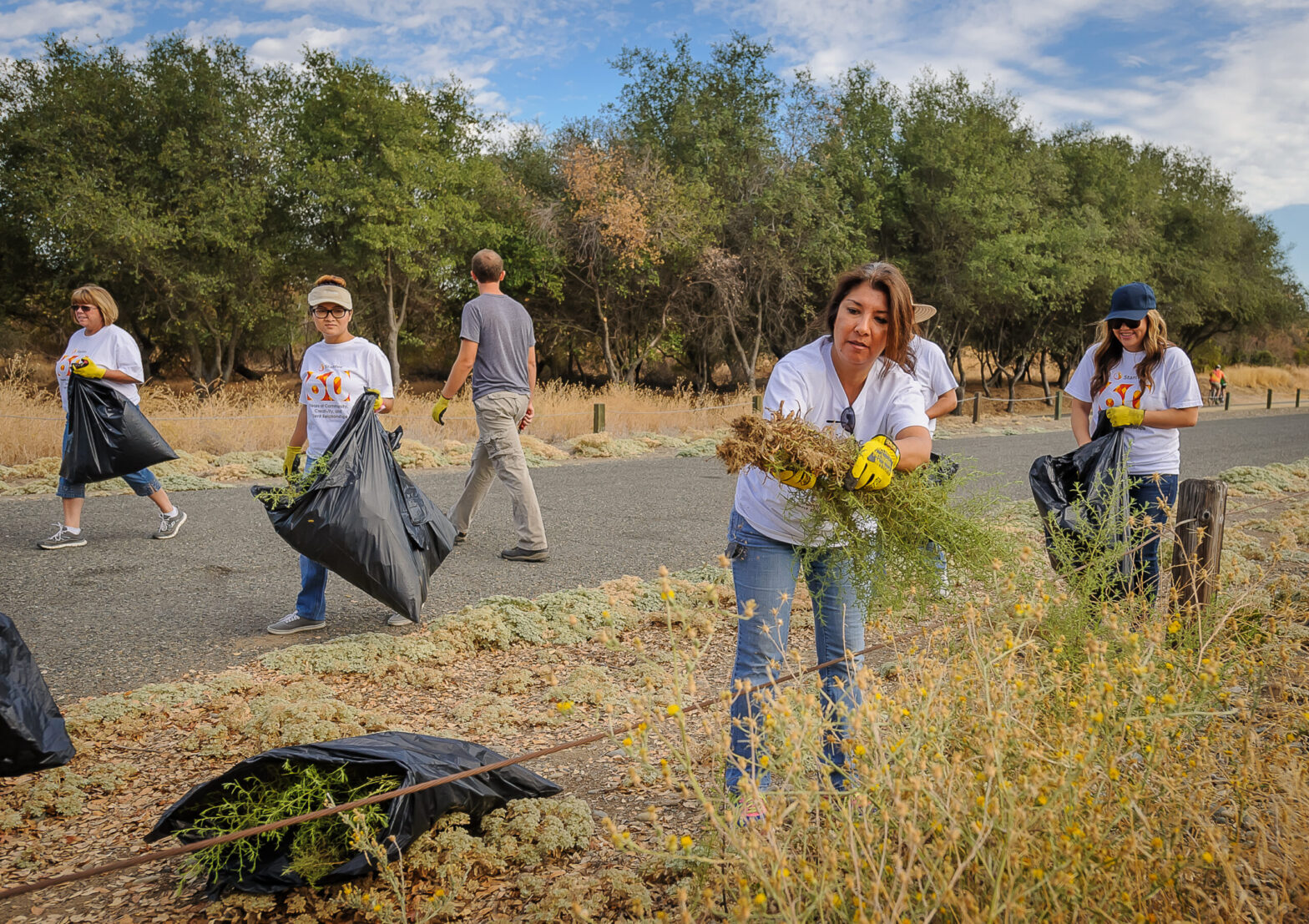Despite its dainty foliage, stinkwort (Dittrichia graveolens) spells big trouble on the American River Parkway. Native to southern Europe, stinkwort was first observed in the Sacramento region in 2002, thought to have been introduced by seeds in landfill soil. This spunky plant thrives in hot, dry weather and soils that are gravelly, saline, or even contaminated with heavy metal. The fast-growing annual can be found in grasslands, but also performs well in areas where the ground is disturbed or nearly bare, such as fire breaks and along the edges of highways, roads, and trails. Stinkwort gets its name from the camphor-like smell of its sticky, resinous foliage. The annual plant germinates in the winter, remaining small until spring when it grows rapidly into a three-foot tall, upright shrub. Invading Spaces An invasive plant like stinkwort can dominate an ecosystem by out-competing native food plants. Being non-native, it provides no benefit to Parkway animals and insects and lacks natural limitations on its growth. It crowds out native plant species by overtaking resources, such as sunlight, nutrients, and water, disrupting an already fragile habitat. Stinkwort also contains phytotoxins that inhibit the growth of surrounding vegetation, giving it a greater advantage over other plants. Parkway wildlife species are dependent upon native plants for food and shelters, and some plant-eaters create important food sources for other species. For instance, insects that feed on a specific native plant may be an essential protein source for frogs, lizards, and birds. The decline of the native plant harms the insects, and the decline of the insects then harms the other animals, rippling throughout the food chain. A Seedy Battle A member of the sunflower family, stinkwort blooms in September, when other plants are already dormant or have gone to seed. Its small, yellow flowers produce highly transportable, dandelion-like seeds that are easily moved by water and wind. They also travel by gripping a variety of surfaces, including animal fur, human clothing, and vehicle or bicycle tires. According to USDA reports, a single stinkwort plant can produce an estimated 70,000 tiny, highly transportable seeds known to move over 200 meters in the air — about two football-field lengths. This means that removal efforts must be diligently repeated until the bank of fallen seeds around the original plant has been depleted, and surrounding land must be regularly monitored for new areas of growth. Fortunately, stinkwort seeds have a short life in soil, remaining viable for only two to three years. Easy to Pull, Difficult to Contain Stinkwort is known to defy most control methods, even returning rapidly after wildfire. Hand-pulling has proven to be the most reliable way to remove the weed. It has a relatively short root system, making it easy to pull out, especially after a rain. However, if part of the plant remains, it can quickly regrow. Yet another challenge is that stinkwort seeds can ripen on pulled or cut plants if they have already flowered. Extracted plants must be securely bagged if… Continue reading Stopping the Stinkwort Invasion




